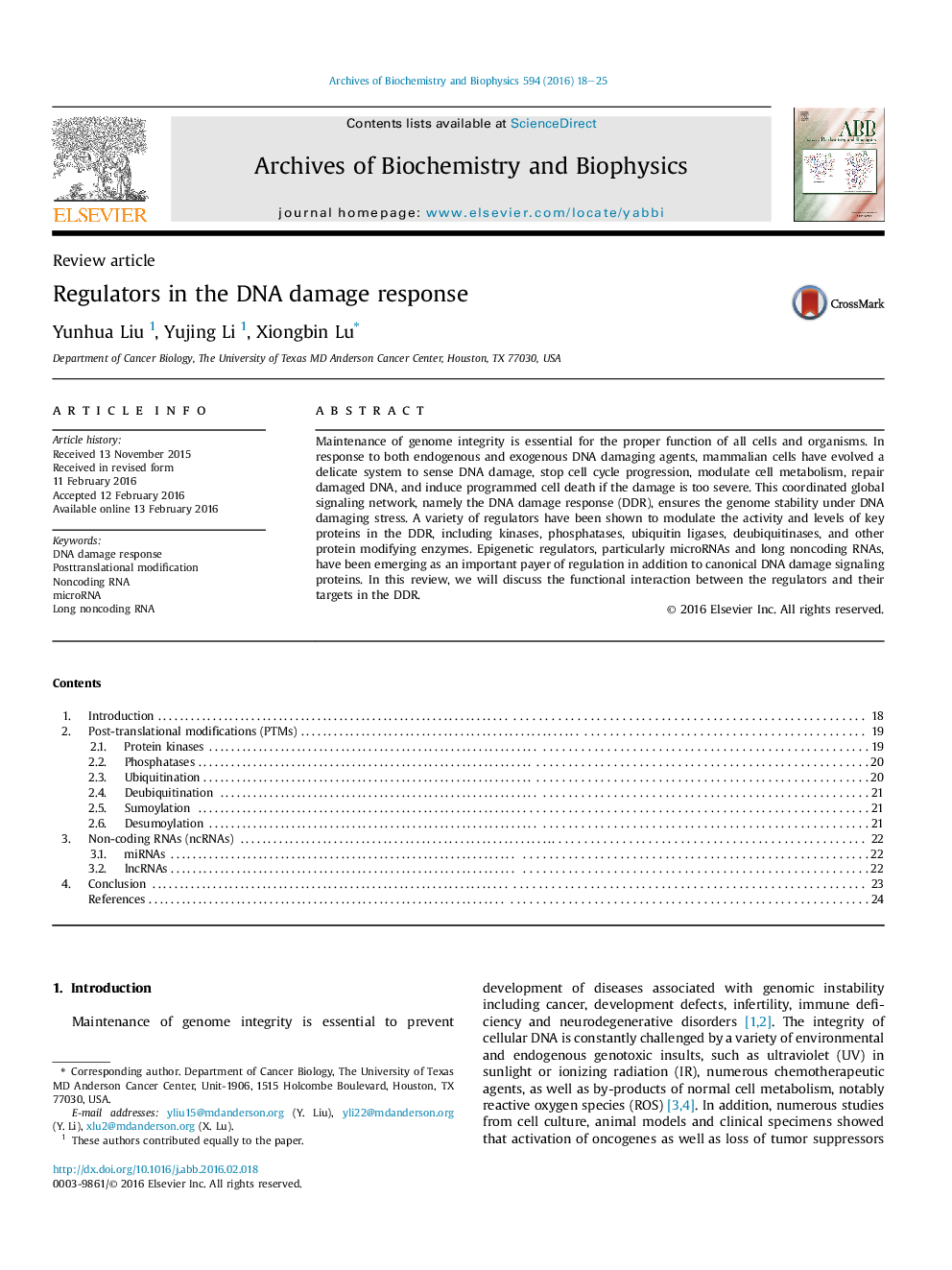| Article ID | Journal | Published Year | Pages | File Type |
|---|---|---|---|---|
| 1924740 | Archives of Biochemistry and Biophysics | 2016 | 8 Pages |
•DDR is a highly sophisticated machinery to limit deleterious consequences in the cell.•PTMs are a critical layer of regulation to modulate the functional features of the DDR components.•Noncoding RNAs, including miRNAs and lncRNAs, are involved in DDR signaling and DNA repair.
Maintenance of genome integrity is essential for the proper function of all cells and organisms. In response to both endogenous and exogenous DNA damaging agents, mammalian cells have evolved a delicate system to sense DNA damage, stop cell cycle progression, modulate cell metabolism, repair damaged DNA, and induce programmed cell death if the damage is too severe. This coordinated global signaling network, namely the DNA damage response (DDR), ensures the genome stability under DNA damaging stress. A variety of regulators have been shown to modulate the activity and levels of key proteins in the DDR, including kinases, phosphatases, ubiquitin ligases, deubiquitinases, and other protein modifying enzymes. Epigenetic regulators, particularly microRNAs and long noncoding RNAs, have been emerging as an important payer of regulation in addition to canonical DNA damage signaling proteins. In this review, we will discuss the functional interaction between the regulators and their targets in the DDR.
Graphical abstractFigure optionsDownload full-size imageDownload high-quality image (161 K)Download as PowerPoint slide
